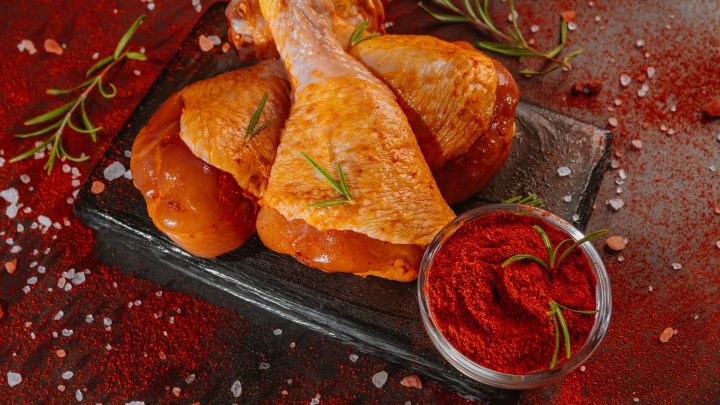Keep refrigerated means food must stay at or below approximately 40 degrees Fahrenheit (4 degrees Celsius) to remain safe for human consumption.
Below, read everything you need to know about what it means to keep food refrigerated.
In addition, learn how to maintain your fridge and tell if food has spoiled. You’ll also find answers to frequently asked questions about food safety and refrigeration.
“Keep Refrigerated” in Detail
“Keep refrigerated” seems like a pretty straightforward directive, but when you think about it, it leaves a lot of questions. Let’s take a look at some of them now.
What Temperature Should I Set My Refrigerator?

The term refrigeration actually refers less to the appliance and more to the actual temperature. After all, putting food in a fridge that’s not plugged in doesn’t do any good.
Your refrigerator must be set no higher than 40 degrees and no lower than 32 degrees Fahrenheit or between 0 and 4 degrees Celsius. This temperature range keeps food cold safely and without freezing.
Does It Matter Where the Food Goes Inside the Fridge?
That depends more on your particular fridge. Older models, in particular, vary in temperature in different parts of the appliance. Generally, the back tends to be colder and the front a bit warmer.
If you’re concerned about the consistency in temperature in various parts of your fridge, get a thermometer.
Move it from section to section every few days and note temperature variations. You may find that you need to service your appliance.
How Long Can Food Sit Out?

The answer to this question depends on the food. According to the Department of Agriculture (USDA), refrigerated food should get left out for no more than two hours.
After about two hours, many refrigerated foods (including meat, eggs, cheese, juices, yogurts, condiments, and more) surpass 40 degrees.
Bacteria grow most aggressively between 40 and 140 degrees Fahrenheit (4-60 degrees Celsius), so you must limit the time your food rests at this temperature. Many food professionals refer to it as the danger zone.
Keep in mind that if you programmed your fridge to 39-40 degrees, your food is already close to the danger zone. Limit the amount of time it sits out.

Some foods that need to be refrigerated can be taken out of the fridge for more than two hours in some cases. These include many raw plant foods, such as broccoli, melon, and basil.
Maintain Your Fridge and Freezer
Another critical thing you can do to prevent food spoilage is to keep your appliance well-maintained.
One common refrigerator maintenance myth is that a full fridge is bad for the mechanisms, but that isn’t true.
When there is more cold food in the storage space, it helps the fridge maintain the temperature easier. That puts less strain on the coils and saves you money on your electric bill.
Other than that, perform routine maintenance about twice a year. This process includes cleaning the coils, checking the door seals, and replacing them if needed.
If your fridge has any filters, you should also replace those biannually.

How To Tell if Food Is Spoiled
Of course, the last thing you want to do is eat spoiled food or feed it to your loved ones. How can you tell if food has gone bad?
The first thing to do is check the expiration date. There are several schools of thought about when to throw food away based on expiration dates.
Regardless of your opinion, the date gives you an idea of how old it is.
Next, use some of your senses:
- Sight: can you see signs of discoloration or mold? Have ingredients separated?
- Smell: if it smells sour or rotten, throw it away.
- Touch: some foods lose their natural consistency when they start to spoil.
- Taste: Always use extreme caution before tasting potentially spoiled food! Still, dipping your finger in a small amount of food to carefully take a tiny taste will not likely hurt you.
Finally, sometimes it’s better to be safe than sorry. When in doubt, throw it out.
Frequently Asked Questions
Here are some quick answers to common questions that we haven’t covered above:
Can I freeze “keep refrigerated” food?
Sometimes, you can put food meant for the refrigerator in the freezer. The main reason to do this is to extend the life of the food past its expected expiration.
Some foods don’t freeze well, though. Anything with dairy in it gets tricky in the freezer unless intended to be kept frozen.
Egg whites and foods containing raw egg whites don’t work. Also, avoid fried foods, fully-cooked pasta and rice, and anything with mayonnaise or sour cream.
Also, ensure that your food container is freezer-safe. Glass, in particular, may shatter if frozen.

Keep refrigerated vs. refrigerate after opening?
What’s the difference between foods labeled “keep refrigerated” and “refrigerate after opening?”
Typically, foods that only need to get cooled after opening are vacuum-sealed. Air and other particles can’t get into the container.
This barrier between the food and the outside world functions as a natural preservative. However, when you open the container, you’ve lost that protection.
Refrigeration slows or stops bacteria from growing on food, so you need to do that instead.







